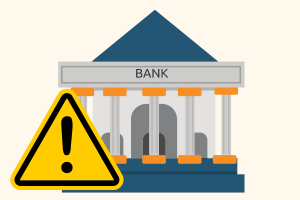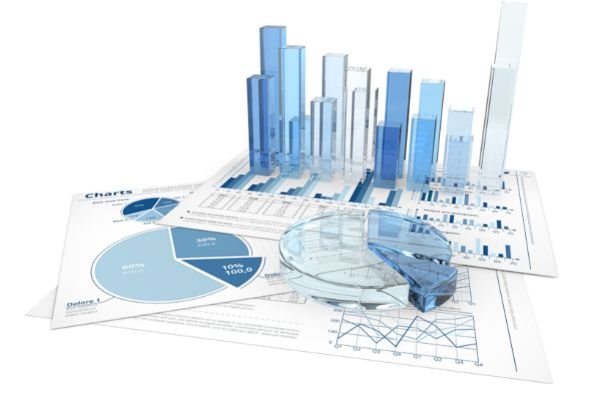Project Financing
The financing of long-term infrastructure, industrial projects and public services using a non-recourse or limited recourse financial structure is termed as Project financing. The debt and equity used to finance the project are paid back from the cash flow generated by the project. Project finance is one of the most important point in today’s world because of continuous growth and expansion in the industries at a rapid rate. Project finance is different from traditional form of finance because the credit risk associated with the borrower is not as important as in any ordinary loan transaction; the most important thing is the identification, analysis, allocation and management of every risk associated with the project.
Types of Loan in Project Financing
- Term loans
- Mortgage Loan
- Cash Credit Limits
- MSME Loan
- Foreign currency term loans
- External Commercial Borrowings
- Export Credit Agency backed long term debt
- Lines of credit from different multilateral institutions
- Non fund based facilities like Letter of Credit, Bank Guarantee, Supplier’s Credit, Buyer’s Credit etc.
- Subordinated debt financing.
Request A Call Back
Key Features of Project Financing
- Capital Intensive Financing Scheme: Project Financing is ideal for ventures requiring huge amount of equity and debt, and is usually implemented in developing countries as it leads to economic growth of the country. Being more expensive than corporate loans, this financing scheme drives costs higher while reducing liquidity. Additionally, the projects under this plan commonly carry Emerging Market Risk and Political Risk. To insure the project against these risks, the project also has to pay expensive premiums.
- Risk Allocation: Under this financial plan, some of the risks associated with the project is shifted towards the lender. Therefore, sponsors prefer to avail this financing scheme since it helps them mitigate some of the risk. On the other hand, lenders can receive better credit margin with Project Financing.
- Multiple Participants Applicable: As Project Financing often concerns a large-scale project, it is possible to allocate numerous parties in the project to take care of its various aspects. This helps in the seamless operation of the entire process.
- Loan Repayment With Project Cash Flow: According to the terms of the loan in Project Financing, the excess cash flow received by the project should be used to pay off the outstanding debt received by the borrower. As the debt is gradually paid off, this will reduce the risk exposure of financial services company.
- Better Tax Treatment: If Project Financing is implemented, the project and/or the sponsors can receive the benefit of better tax treatment. Therefore, this structured financing solution is preferred by sponsors to receive funds for long-term projects.
Importance of Project Finance Decisions
Process of project finance
- Planning : basic analysis to determine whether a project is Worth while to justify a feasibility study.
- Analysis : economical, commercial, technical, ecological, marketing analysis.
- Selection: final selection on the basis of findings in the analysis. Analysis of results of NPV, IRR, Payback period, sensitivity analysis, etc.
- Financing: debt / equity.
- Implementation : Project & Engineering designs, Approvals & permissions, Negotiations & Contracting, Construction, Training, Plant Commissioning
- Review: Periodic review once the project has commissioned
Market Analysis
- Aggregate demand for the proposed product
- Market share of the project under appraisal
- Consumptions trends in the past
- Past & present supply
- Production possibilities & constraints
- Imports & Exports situation
- Cost structure
- Elasticity of demand
- Structure of competition
- Distribution channels & marketing policies
Technical Analysis: Project Cost
- Land Cost: includes basic cost, registration charges, stamp-duty, other incidental charges.
- Land development charges / cost appropriately considered.
- Plant & Machinery cost to include all taxes & duties along-with installation charges & incidental expenses.
- Building: based on architects certificate, to include cost of hiring professionals, etc.
- Accurate Estimation of Project important for reliable financial analysis

Margin requirements
- In case of Bank Term Loans:
- Land & Building: 30%
- Plant & Machinery: 25%
- 2nd Hand Machinery: 40%
- Generally Banks there is apprehension about financing purchase cost of land.
- Reimbursement of cost incurred, higher margins may be stipulated.
- Generally cost incurred upto one year before are eligible for Bank finance
Working Capital Requirement
Based on trade receivables, inventory levels & extent of trade credit available in the business.
Thumb rule: 20% to 25% of the estimated sales for the year.
Assessment & review on a yearly basis. Short review possible.
Assessment of Working Capital
- Estimation of Level of Gross Working Capital
- Estimation of level of current liabilities.
- Determining Net Working Capital.
- Determination of Promoter’s Margin.
- Calculating MPBF.
Methods of lending
- First Method: 25% of WC Gap is promoters contribution. Thus 75% of WC
Gap is MPBF
- Second Method: 25% of total Current Assets is to be promoters contribution
- Nayak Committee: 25% of estimated sales, promoters margin at 20%.
- Each Lender Bank has its mechanics for WC Margin.

Caution
- Eligible Drawing Power is limiting factor.
- Careful in projecting the need for WC & Bank finance
- DP calculation monthly. Stock debtor statements required to be submitted to financing Bank
Means of Finance
- Equity capital
- Term loans
- Debenture capital
- Deferred credit
- Unsecured loans / quasi capital
- Important aspect: Minimum promoters contribution to be based on the lender’s policies. The ratio between equity to quasi equity may have to be maintained as per lenders norms.
- Revaluation Reserves not considered as equity.
- Non-Cash elements in equity not considered by lenders for debt equity ratio.

Means of Finance
Prepare
- Projected Income & Expenditure Statement
- Project Balance-sheet
- Projected Cash-flow
- Elaborately state the basis of assumption.
- Comparables of other companies whereever possible would be useful
- Past results of company may be used if expansion project.
Project Evaluation
- IRR
- NPV
- Simple Payback Period
- Break-Even Point
- Cash Break Even Point
- DSCR
Sensitivity Analysis
- 5% increase in raw material costs.
- 5% decrease in selling price.
- 5% increase in raw material cost accompanied with
- 5% decrease in selling price.
- 10% decrease in volume.
- Impact of the above scenarios on the financial parameters discussed earlier.
Project Report
Project Report
- General
(a) Introduction giving background of the promoters and the concern, its office and factory locations (unit wise, if there are multiple locations); reasons for starting of the proposed activity or for expansion.
If a company – duly certified copy of Memorandum & Articles of Association.
If an existing unit, key figures of the last three years performance including production and sales (quantity and value), net profit, net worth, unsecured loans.
Similar details to be submitted for the associate concerns, if any.
(b) Last three years complete balance sheets and profit and loss accounts of the concern and its associate/sister concerns, including Sales and Production Data (with quantity and value) and Groupings/Annexures to be submitted along with the application.
(c) Up-to-date sales and production figures (quantity and value) of the concern and its associates since the date of the last balance sheet.
(d) Copy of Application to the Bank with all the Annexures thereto and earlier Project Report, if any.
- Promoters
(a) Bio-data of promoters and the key technical/managerial/financial and marketing personnel employed with their age, qualifications and
experience related to the proposed activity with supporting documents in regard to qualifications/experience.
(b) Management set-up-Organisation Chart giving the functional responsibilities and remuneration including perquisites.
- Product
(a) Names of products with technical specifications
(b) Proposed product-mix quantity-wise
(c) End-users of the product.
- Technical Knowhow
(a) Arrangements for technical knowhow
(b) Background of knowhow suppliers (bio data etc.) and salient features of the agreement with the knowhow suppliers specifying the terms of payment, production parameters, penalties etc.
(c) Copy of technical knowhow agreement, if any, to be submitted.
- Plant & Machinery
(a) Technical specifications of proposed machinery and equipment with individual power requirements Technical literature to be submitted along with the application.
(b) Comparative quotations in respect of machinery and equipment and copies of orders (if already placed) to be submitted with the application
(c) Estimate of excise/import duties, sales tax, freight, octroi, erection/installation and other charges to arrive at landed cost of themachinery.
(d) If secondhand machinery, a chartered engineer’s certificate as to its technical condition, value and residual useful life.
(e) Calculations for excise refund/sales tax set-off/modvat etc.
(f) Delivery and Installation Schedule for plant and machinery
(g) Details of aftersales service available
(h) Reasons for selection of a particular make of machinery and equipment (from viewpoint of say price, quality, delivery schedule, payment terms, after sales service etc.)
(i) Plant layout drawn to scale
(j) Production capacity calculation (installed and optimum possible) – with stage wise balancing of the capacity – keeping in view proposed no. of shifts working.
(k) Projected capacity utilisation with justification.
- Land & Building
(a) Land
Important points from the purchase agreement including name of
seller, land tenure, cost of acquisition. Copies of Purchase Documents & Title Verification Report to be submitted.
(b) Building
Salient particulars regarding built-up area, suitability to the proposed
activity, type of construction to be included in the Project Report
(c) Architect’s estimate for land development (including boundary wall/fencing, land-levelling, gates etc.) and building construction cost including factory building, ancillary buildings like stores, workers’
quarters, security, utilities etc.).
- Power
(a) Power requirements – for individual machinery and for lighting – estimate of connected load, maximum demand, power factor and the arrangements being made for ensuring continuous supply (viz.
separate feeder line, if any)
(b) Power Rate per unit (if differential then rates applicable for different periods in the day), duty, minimum demand charges etc.
- Fuel
(a) Type of heating system required
(b) Fuel requirements estimate) Fuel availability and cost
(c) Boiler, specification with cost. (Quotation to be submitted)
V Compressed Air
Estimate of requirement, compressor specifications, cost. (Quotation to be submitted)
- Raw Materials
(a) Requirements (Quantity and Value) of individual raw materials with technical specifications of the raw material.
(b) Availability of the different raw materials with names of major suppliers
with rates for the required specifications and other terms of supply.
(c) Whether covered under quota system and if so the details.
(d) If imported, details of the source and license, if any required, along
with the credit period available and other terms of supply
(Quotations/Invoices of raw materials to be submitted)
- Staff & Labour
(a) Function wise requirements with Nos. and individual monthly
salary/wages for each shift of working for existing and proposed
operations and details of perquisites proposed.
(b) Availability of skilled labour at the proposed location
(c) Industrial climate at the location (labour relations etc.)
- Selling & Marketing
(a) Demand and Supply estimates – existing and future – for the area in
which the products are to be marketed – with source of the data.
Justification for the proposed sales levels
(b) Names and addresses of the existing competitors operating in the area where the products are to be marketed, with their present capacities and utilisation thereof today.
(c) General scenario of the particular industry present and future including existing and likely future competition along with source of the data.
- Profitability
(a) Projected production and sales (after accounting for adjustment in
opening and closing stocks) with quantity and value and if the products exported, relative break-up be given of indigenous and export sales along with export benefits.
(b) Unit Costing (costing per unit which may be per piece) of the products backed by quotations for raw materials (with modvat details), consumables, packing material and other basic inputs. If products exported, costing break-up in respect of exports to be given.
(c) Complete next 5 to 7 Years Projections (Balance-Sheet, Profit & Loss A/c and Fund/Cash Flow (in CMA Data Form – prescribed by Bank) along with detailed assumptions for each item of profit & loss accounts, and schedules/annexure for depreciation – straight line and WDV -, income tax computation (based on applicable number of shifts working), loan repayment and interest, Debt Service Coverage Ratio
(DSCR) and Break-Even Calculations
(d) Comments on profitability in particular the ratio: Profit before Interest, Depreciation and Tax PBIDT/Sales compared to average level of the industry.
- Working Capital Requirements
(a) Working capital assessment (in CMA Data Form or prescribed Bank’s application form)
(b) Normal holding pattern (no. of months) for
Raw materials
Packing material
Stores & consumables
Semi-finished goods
Finished goods
Receivables
and normal credit (in no. of months) received for purchases (with and without L/C) and normal creditor on expenses
- Cost of Project
(a) Land, land development and building cost estimates as stated under locational aspects’ above
(b) Plant & Machinery cost estimates as mentioned under the relative heading above, with estimate of cost for excise, sales tax, freight,
octroi, installation charges etc.
(c) Technical Knowhow cost along with the tax payable, if any
(d) Other Miscellaneous & Fixed Assets cost estimates (electricals, plumbing and sanitary fittings, furniture and fixtures, cooling tower, chilling plant, quality control equipment etc.). Quotations to be
submitted.
(e) Preliminary & Pre-operative expenses estimate (with break-up of all the heads including interest and salaries during construction period, and working notes) and how proposed to be appropriated.
(f) Calculation of contingencies
(g) Cost of Project already incurred item wise with CA certificate; and to be incurred.
- Means of Finance
(a) Proposed means of finance including term loan, capital, unsecured loans, subsidy etc.
(b) If subsidy to be availed, calculation thereof and the time-period in which it is expected to be received.
(c) CA certificate as to the cost of project already incurred and the sources already raised for meeting the project cost already incurred.
(d) Details of cost to be incurred and the sources of finance thereof.
- Schedule of Implementation (New/Expansion/Shifting)
Time frame for commencement and completion of the activities of: acquisition of licenses/permissions acquisition of land
building construction plant & machinery – placement of orders, delivery, installation etc. manpower selection and training
trial runs and date of commencement of commercial production giving preferably a GANTT/PERT Chart.
Following registered persons not required to file GSTR 1, 2 and 3 such as:
Goods and Services Tax (GST) is an indirect tax applicable to the supply of goods and services. It is a comprehensive, multistage, destination-based tax. It has subsumed almost all the indirect taxes except a few state taxes. It is collected from point of consumption and not point of origin like previous taxes.
Documents attach in trademark application:-
A trademark can be registered by the Controller General of Patents Designs and Trademarks, Ministry of Commerce and Industry, Government of India under Trademark Act, 1999 to protect the identity of any goods and services.
Some basic information about Income tax
An income tax is a tax imposed on individuals or entities commonly known as taxpayers that varies with respective income or profits. Income tax generally is computed on taxable income which is calculated after various deductions. Taxation rates may vary by type or characteristics of the taxpayer.
Basic Features to Read before starting private limited company
Private company is required to add the word “Private limited” or “Pvt. Ltd.” to end of its name. Private company should have at least two member and two directors. Private company have right to issue debentures to any number of persons.
Features of Public Limited Company
MCA provides the facility for incorporation of public limited company. For incorporation, firstly apply for name through RUN (Reserve Unique Name) on MCA portal. After availability of name from ROC we should file incorporation form i.e. Spice 32, INC 33(for eMOA), INC 34(for eAOA), .